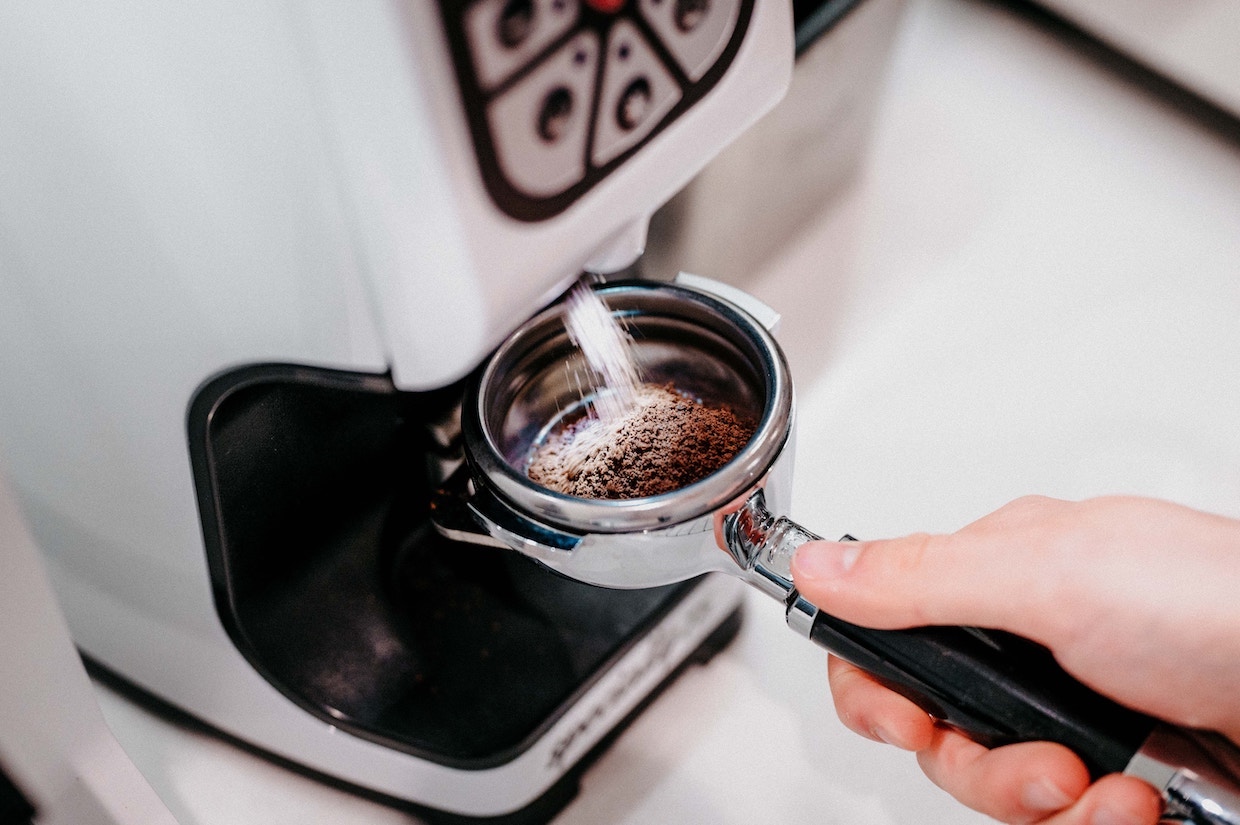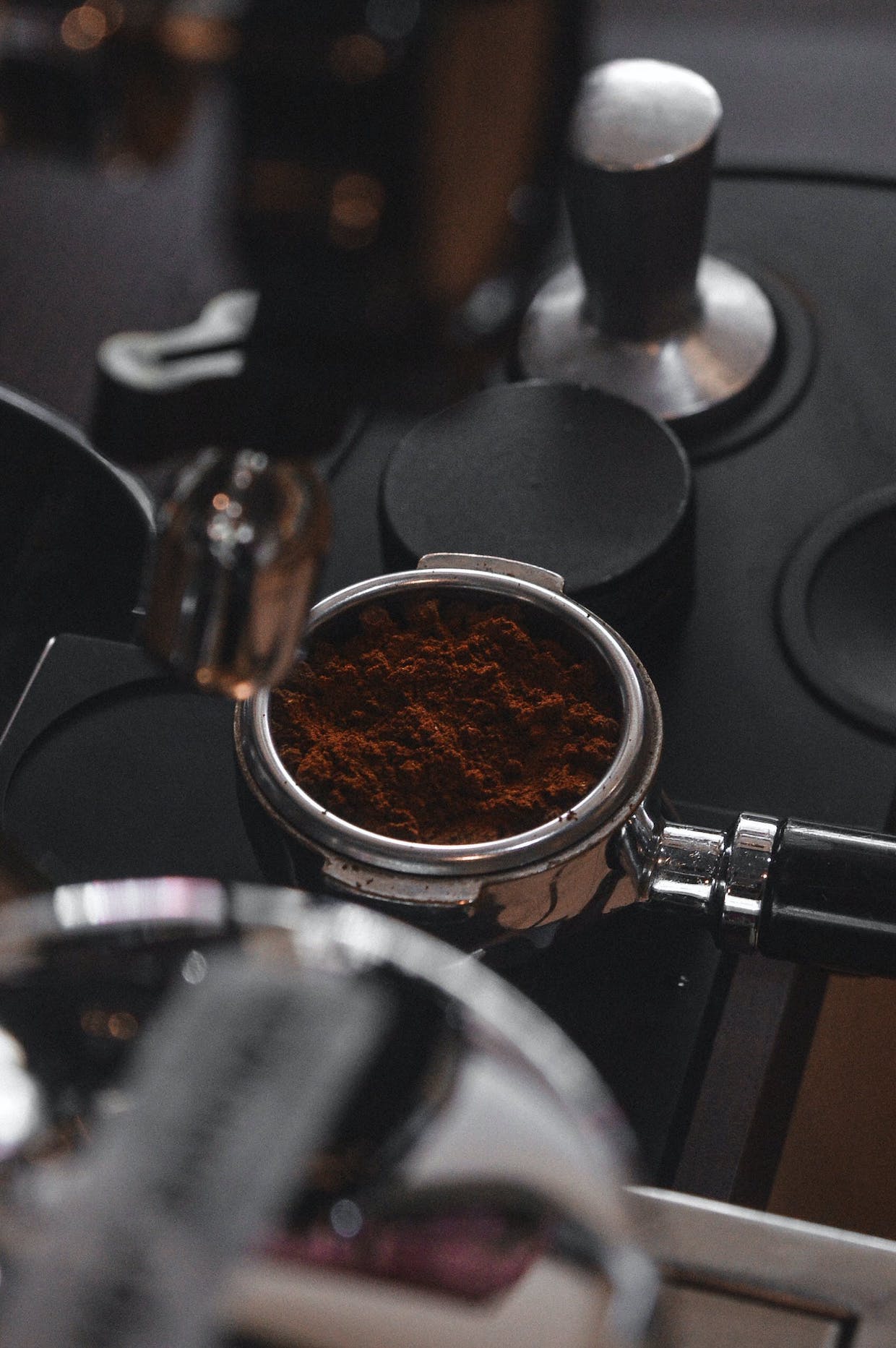
New research suggests a spritz of water prior to single-dose grinding may reduce static and clumping. File photo.
[Note: This story has been updated since its original publication to include some practical advice from study author Christopher Hendon on adding water to coffee. Cut to the bottom of the story for more.]
New research suggests that adding a touch of moisture to roasted whole bean coffee just before grinding can result in less static electricity and clumping, resulting in more consistent and intense espresso.
The research — led by study authors Christopher Hendon of the University of Oregon and Joshua Méndez Harper of Portland State University — gives credence to a de-clumping hack commonly referred to in coffee circles as the Ross Droplet Technique (RDT).
Static caused by friction in the grinding process has long been the bane of coffee grinder manufacturers, since it can result in retention of grinds in the grind chamber, increased mess as grinds cling to surfaces and inefficiency and clumping in the bed of grinds.
While other recent interventions such as pre-grinding ionization and post-grinding WDT de-clumping have addressed this issue — a particular foe to espresso — the new research suggests a little spritz may go a long way towards preventing clumps and maintaining uniformity during espresso extraction.
“Moisture, whether it’s residual moisture inside the roasted coffee or external moisture added during grinding, is what dictates the amount of charge that is formed during grinding,” Hendon, a computational materials chemist, said in an announcement of the new research. “Water not only reduces static electricity and therefore reduces mess as you’re grinding, but it can also make a major impact on the intensity of the beverage and, potentially, the ability to access higher concentrations of favorable flavors.”
Hendon’s name has been associated with a number of influential studies related to espresso grinding and extraction. In 2014, he and UK barista champion Maxwell Colonna-Dashwood collaborated on a water study that ultimately led to the book Water for Coffee. In 2016, Hendon led a study that found chilling coffee prior to grinding improved particle consistency. Four years later, Hendon’s name was on a study suggesting that less coffee and coarser grinds may lead to more consistent and better-tasting espresso. That study informed a 2023 paper from a separate research group explaining how finer grinds may lead to weaker espresso.
The new research was published today in the journal Matter.
The study included measuring the amount of static electricity produced through the grinding process by different coffees. The research took into account the roaster (commercially roasted or in-house), country of origin, post-harvest processing method, roast color and post-roast moisture content. It also measured static based on grind particle settings and size.
Although country of origin and processing method did not seem to affect static electricity, there were clearer associations related to water content, roast color and particle size.
When analyzing identical coffees — the same single-origin beans from the same roast batches — the research found that grinding with a “a splash of water” resulted in a longer extraction time during espresso-making and a stronger brew. The application of water prior to grinding also resulted in more consistency from shot to shot.
“The central material benefit of adding water during grinding is that you can pack the bed more densely because there’s less clumping,” Hendon said. “Espresso is the worst offender of this, but you would also see the benefit in brew formats where you pour water over the coffee or in small percolation systems like a stovetop Bialetti. Where you’re not going to see a benefit during brewing is for methods like the French press, where you submerge the coffee in water.”
For those of you playing at home (or at the single-dose espresso bar), Hendon did offer DCN some useful tips
“Generally, start at the low end and work up until you start to see the flow rate benefits,” Hendon said. “For example, start with 0.1 milliliters of water per 20 grams [of coffee], and build up. The limit will be grind- and coffee-dependent. We found that less than 0.5 milliliters of water for 20 grams was a pretty good region to work in.”
See the full study in Matter.
Does your coffee business have news to share? Let DCN’s editors know here.
Nick Brown
Nick Brown is the editor of Daily Coffee News by Roast Magazine.







Comment